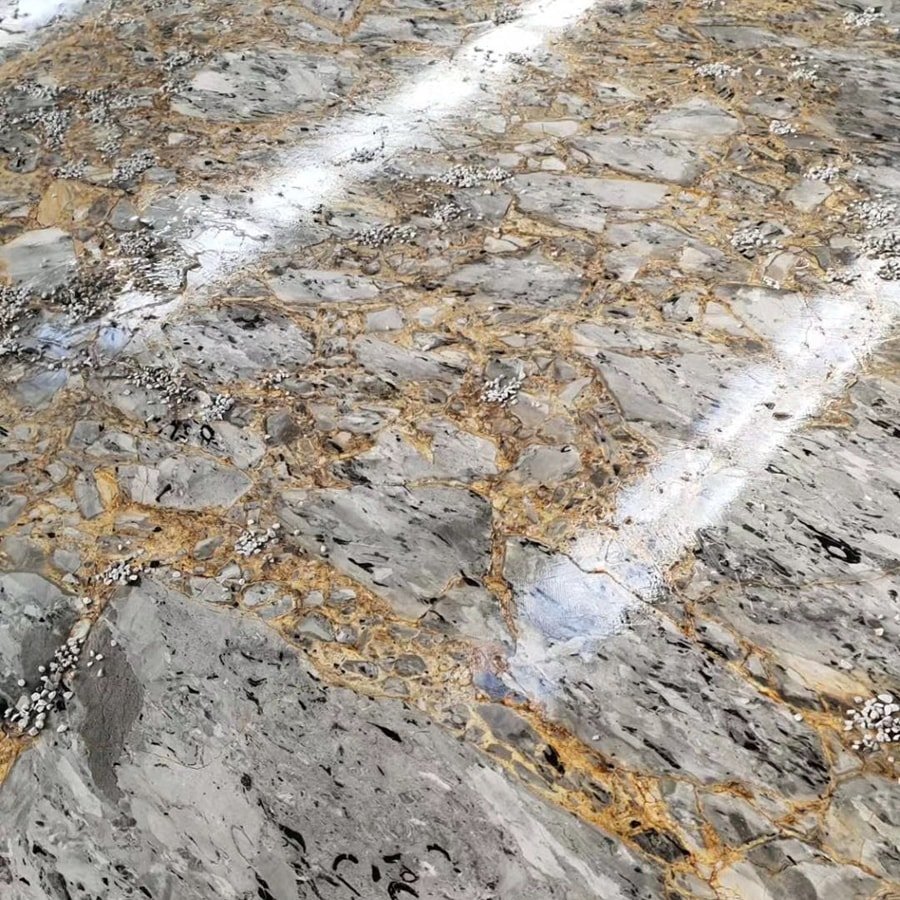
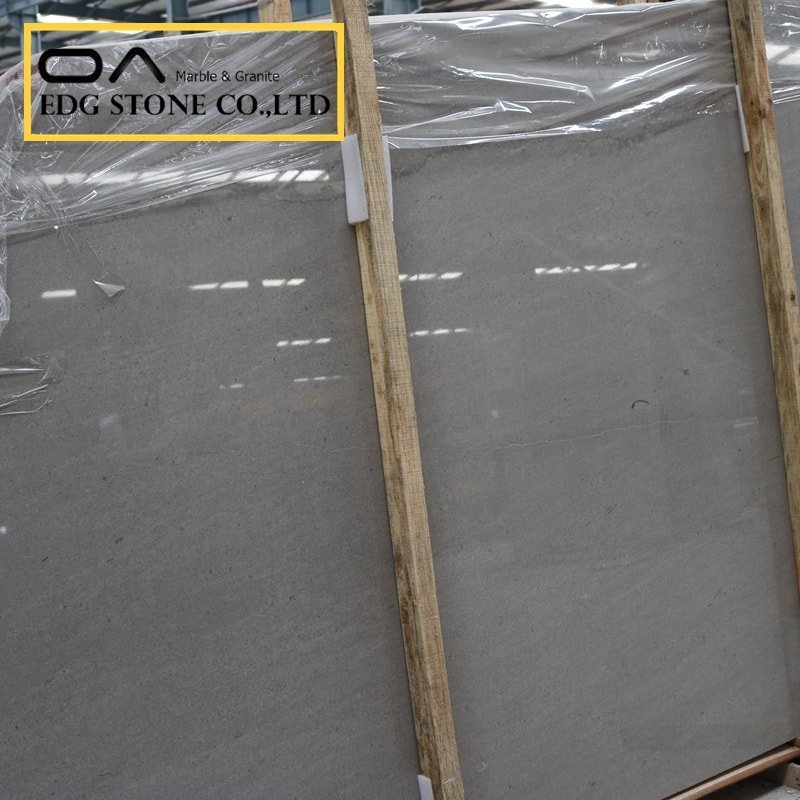
1. What is gray marble?
Table of Contents
Toggle- 1. What is gray marble?
- 2. How is gray marble formed? (The geological process)
- 3. What gives marble its gray color (minerals & impurities)
- 4. Where is gray marble quarried today — global producers & notable varieties
- 5. Market context & data: demand, pricing tiers, and trends
- 6. Regulations, worker safety and sustainability shaping quarrying & fabrication
- 7. Is gray marble a good investment?
- 8. How to buy gray marble — manufacturer/factory / wholesale tips
- FAQ — top 5 Google hot FAQs (direct answers)
- SEO tags
Marble is a metamorphic rock made mostly of recrystallized carbonate minerals (calcite or dolomite). Gray marble describes varieties whose overall background or veins read as gray rather than white, green, red, or black. In trade vocab, “gray marble” covers a broad aesthetic range — from soft pewter with thin veins to deep charcoal with metallic highlights.
2. How is gray marble formed? (The geological process)
Marble originates as limestone or dolostone (sedimentary rocks formed on ancient sea floors). Deep burial, tectonic pressures, and elevated temperatures cause recrystallization — calcium carbonate crystals grow and interlock into the dense, polishable rock we call marble. During this metamorphic transformation, impurities originally present in the sedimentary layers are mobilized and re-distributed, creating veins, clouding, and color—including gray tones. This is a standard metamorphic process described in geology references.
3. What gives marble its gray color (minerals & impurities)
Gray and darker tones in marble are typically caused by:
Graphite and elemental carbon (from decayed organic matter or fossil content) — gives steely, metallic gray.
Pyrite and iron minerals (tiny sulfide/oxide inclusions) — can darken backgrounds and create sparkles or brownish-gray shades.
Clay minerals, fine silts, or carbonaceous layers within the original limestone produce subtle gray or bluish-gray hues.
Short version: the purer the limestone, the whiter the marble; the more impurities (graphite, iron, clay), the more gray or colored the result.
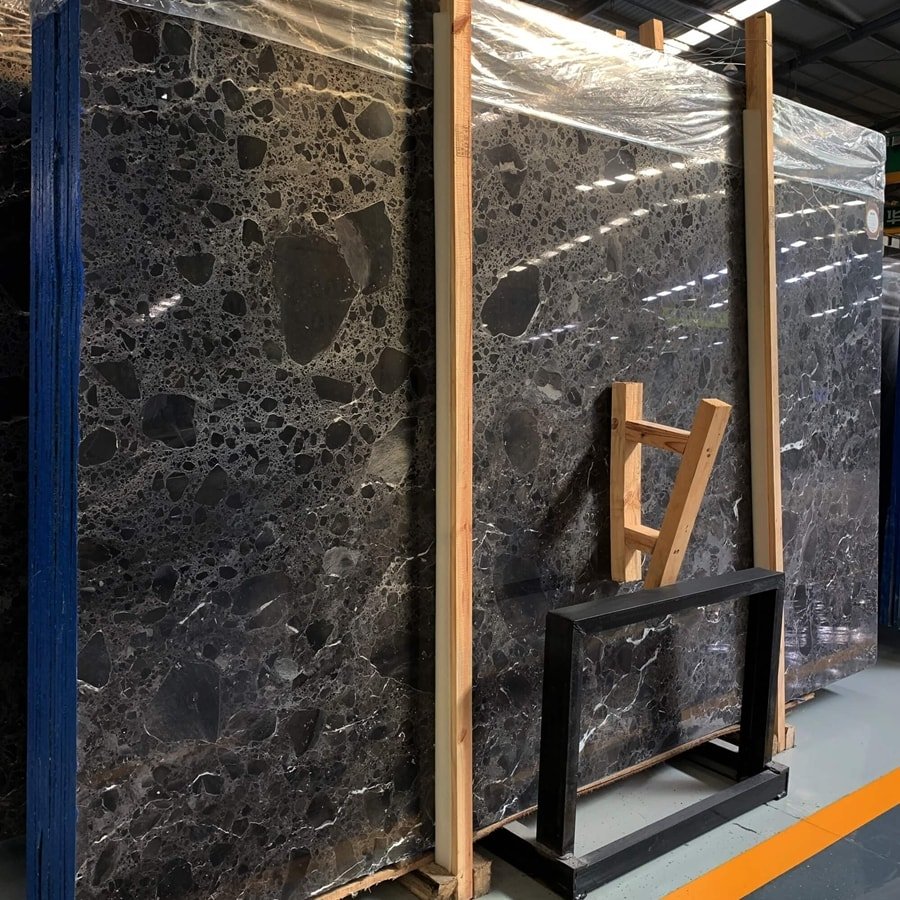
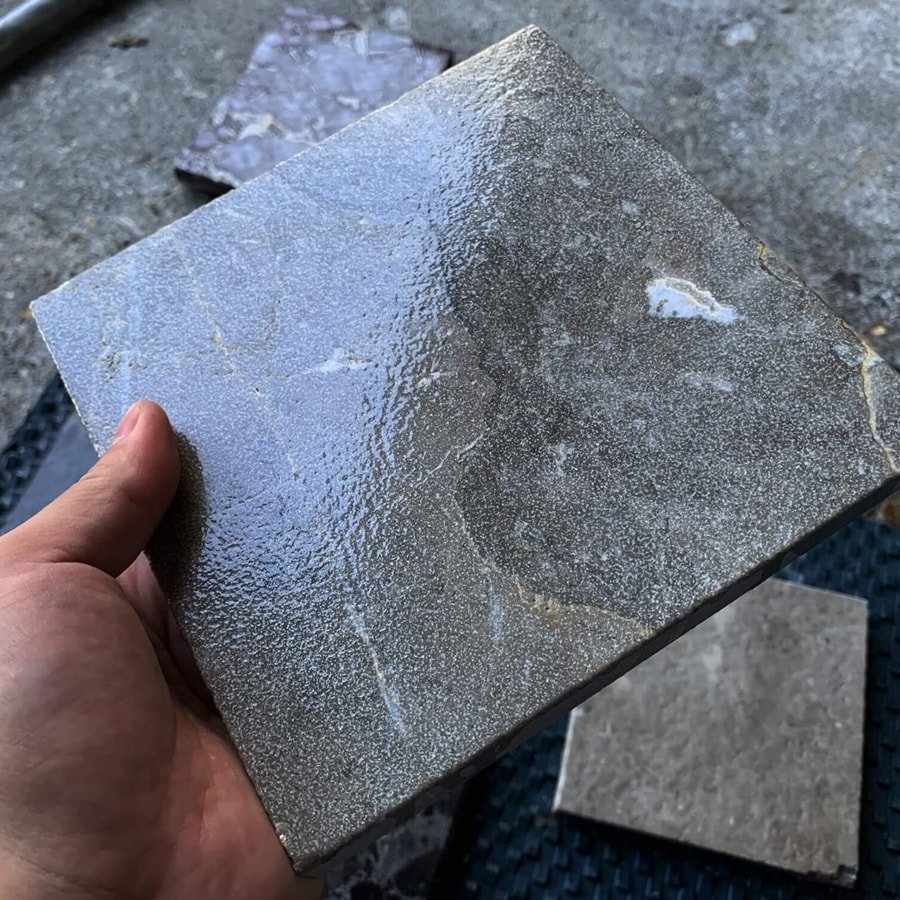
4. Where is gray marble quarried today — global producers & notable varieties
Gray marble varieties exist on almost every continent. Important commercial sources include:
Italy — Famous for many marbles; the Bardiglio family (Bardiglio Scuro / Bardiglio Imperiale) is are classic Italian gray marble used in flooring and countertops. Italy remains synonymous with luxury marbles.
Turkey — A leading global exporter of grey marbles (Tundra Gray, Savana Gray, Invisible Gray, etc.). Turkey’s quarries supply a wide range of slabs/tiles at competitive price points.
Greece & Spain — Both countries produce grey marbles with regional names and traditional uses in interiors and monuments.
India — Produces grey marbles and gray-toned limestones for domestic and export markets; often cost-competitive. 維基百科
Brazil & other South American sources — Provide exotic, sometimes blue-gray or patterned stone varieties used for statement slabs.
Each region’s geology yields subtle differences (grain, veining, tone) — important for design specification and pricing.
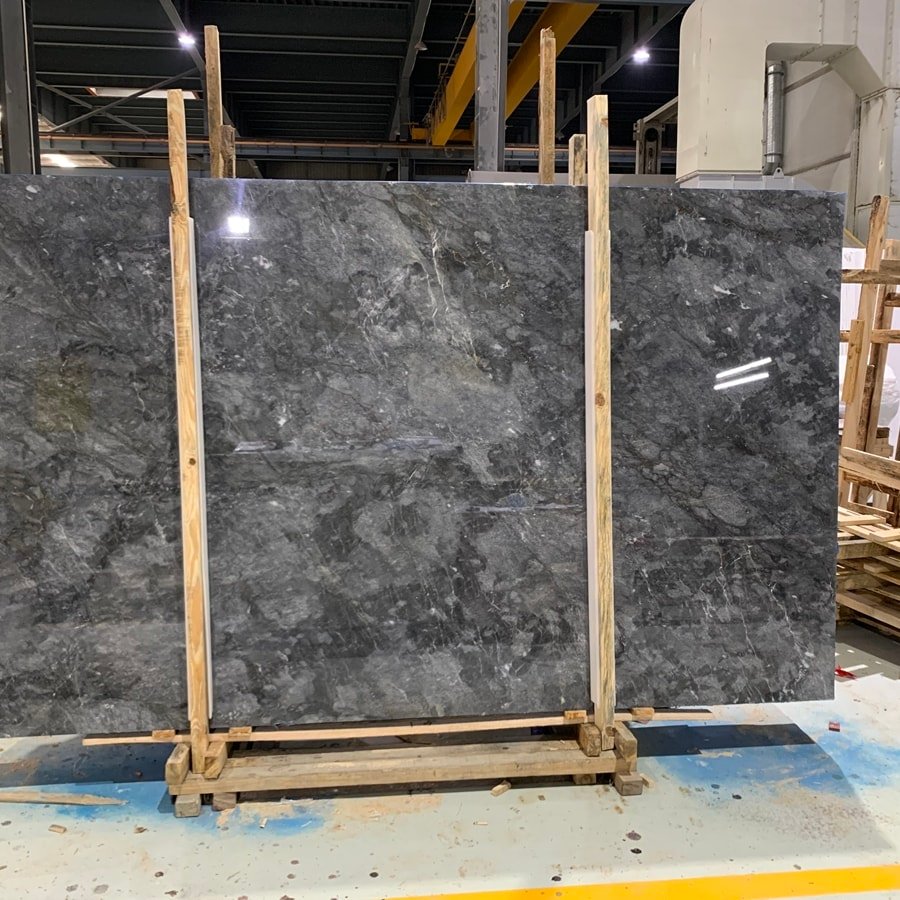
5. Market context & data: demand, pricing tiers, and trends
Market size snapshot: The global natural stone/marble market is substantial and growing; multiple market reports estimate global marble/natural-stone markets in the tens of billions USD with steady multi-percent CAGR (estimates vary by source and scope — e.g., whole natural stone markets vs. marble-only). Use vendor/industry reports for procurement-grade figures.
Price tiers: Grey marbles can span from budget-friendly to high-luxury. Some named Italian or rare marbles command premium prices; typical countertop-grade marble pricing varies widely based on origin, vein rarity, and slab size (examples for top-tier marbles like Statuario or Calacatta can reach many hundreds per square meter or more).
Trend — engineered vs. natural: Engineered (quartz) surfaces are growing faster than natural stone in countertop markets, but natural marbles keep a strong niche for luxury and heritage projects. This dynamic influences how suppliers price and stock gray marble.
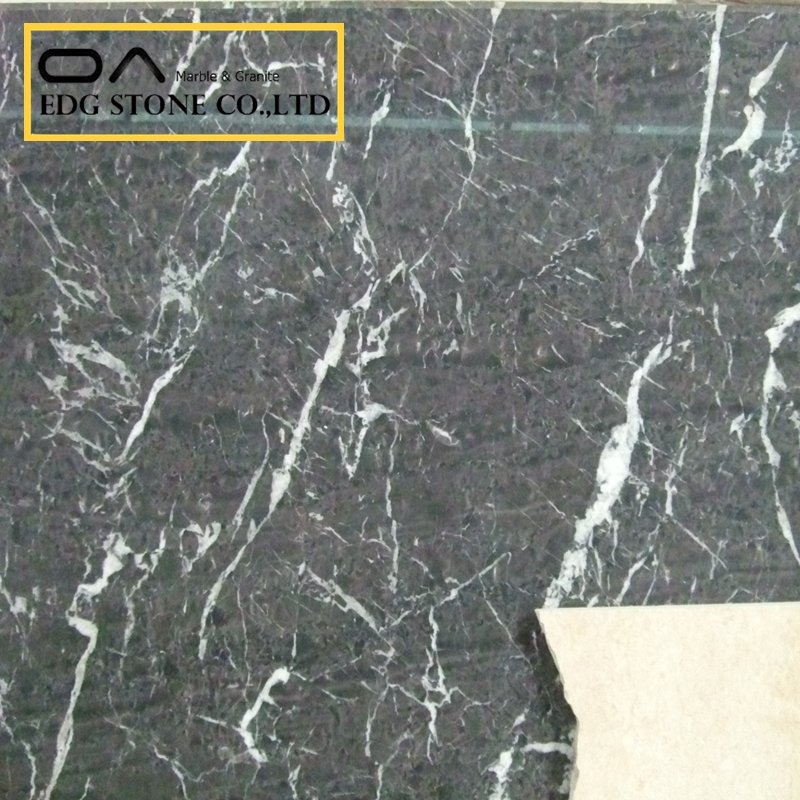
6. Regulations, worker safety and sustainability shaping quarrying & fabrication
Regulatory and health trends are now major drivers in the stone sector — and they matter when sourcing grey marble from a manufacturer/factory:
Respirable crystalline silica (RCS): Cutting, grinding, and polishing stone produce respirable crystalline silica dust — a known carcinogen. In the U.S., OSHA has enforceable silica standards for construction and general industry; compliance is enforced through inspections and targeted enforcement initiatives for engineered stone and fabrication shops. Employers must use controls (wet methods, local exhaust ventilation, and respiratory protection) and monitoring.
European binding OEL: The EU adopted a binding occupational exposure limit (BOEL) for respirable crystalline silica at 0.1 mg/m³ (Directive updates and adoption in member states), and ongoing EU-level discussions continue about exposure limits and worker protections. This affects European quarries and fabricators and indirectly buyers who require compliant supply chains.
Standards & sustainability: Industry standards (ASTM / ISO) and sustainability disclosures such as Environmental Product Declarations (EPDs) and eco-labeling are increasingly requested in public tenders and corporate procurement — pushing quarries and factory suppliers toward traceability, lower-carbon logistics, and more transparent chemical compliance (REACH in the EU for certain substances).
Implication for buyers: insist on documented dust-control protocols, worker-safety compliance, and EPDs / chain-of-custody evidence when purchasing by the slab or in large project quantities.
7. Is gray marble a good investment?
Short answer: It depends on your objective.
For resale/real-estate value: High-quality marble (rare veins, named origins like Italian Bardiglio or Carrara sub-varieties) can add perceived luxury and resale appeal — but marble is seldom a direct “financial investment” like art or jewelry. Value-add is design/value-perception, not capital appreciation.
For long-term durability & maintenance: Gray marbles vary in porosity and hardness. Many greys (especially those with higher silicate or dolomite content) can be durable, but all marbles are softer than granite/quartz and are susceptible to etching from acids and staining without sealing. Ask suppliers for technical datasheets (water absorption, Mohs hardness) before claiming “investment-grade.”
For commercial projects: When properly specified (sealant, edge detail, maintenance plans), gray marble can be a strong brand/experience investment (hotels, galleries, luxury retail). But lifecycle costs (repair, sealing, replacement) should be modelled.
8. How to buy gray marble — manufacturer/factory / wholesale tips
If your goal is to source slabs (manufacturer/factory/wholesale), follow these steps:
Define spec — color swatch, veining pattern, slab dimensions, finish (polished, honed, leathered).
Request test data — physical property datasheet (water absorption, flexural strength), and extraction origin.
Ask for compliance — ask fabricators for silica control protocols, SDS for coatings/sealants, and any EPDs or sustainability statements.
Verify provenance — ask for quarry name + photos and, for large orders, visit the yard or request third-party inspection to reduce mismatch risk.
Sample & mockup — order full-size sample slabs for color/vein matching (not only small chips).
Negotiate lead time & MOQ — some quarries offer no MOQ for exclusive blocks; others have minimum orders. International freight and port handling impact the landed cost. Use slab yield calculations to avoid waste.
FAQ — top 5 Google hot FAQs (direct answers)
Where does gray marble come from?
Gray marble comes from metamorphosed limestone/dolomite and is quarried worldwide — notably Italy (Bardiglio), Turkey (Tundra, Savana), Greece, Spain, India, and Brazil.How is grey marble formed?
Grey marble forms when limestone or dolomite containing dark impurities (organic carbon, graphite, pyrite, clay) is subjected to high heat and pressure, recrystallizing into marble.Which color of marble is most expensive?
The priciest marbles are typically rare white marbles with dramatic veining (e.g., Statuario, rare Calacatta varieties) and exotic blacks/golds (Portoro). Prices vary by rarity, quarry, and demand.What are the rarest marble colors?
Pink marbles and certain blues (Azul Macaubas) or very pure, dramatic-veined white marbles are among the rarest and most sought-after. Rarity depends on a limited quarry supply and distinct aesthetics.Is grey marble a good investment?
Gray marble is a solid aesthetic investment for adding luxury and resale appeal when specified and maintained properly, but it’s not typically a direct financial asset—value comes from design impact and correct lifecycle planning.
SEO tags
50 SEO tags (include buyer intent / commercial tags):
where does gray marble come from,grey marble origin,how is grey marble formed,grey marble formation,what makes marble grey,Bardiglio grey marble,Tundra gray marble,grey marble suppliers,grey marble manufacturer,grey marble factory,buy grey marble wholesale,grey marble slabs wholesale,grey marble countertops price,grey marble tiles factory,grey marble quarry,Italy grey marble Bardiglio,Turkey grey marble suppliers,rare marble colors,most expensive marble,Statuario price,Calacatta vs grey marble,is grey marble a good investment,marble market size 2024,natural stone market trends,respirable crystalline silica regulations,OSHA silica stone fabrication,EU silica OEL 0.1 mg/m3,marble EPDs,marble sustainability,marble provenance verification,marble quality datasheet,marble technical specifications,marble maintenance tips,marble sealing guide,grey marble design ideas,grey marble kitchen countertop,grey marble bathroom ideas,grey marble floor tile,marble slab suppliers China,marble exporters Turkey,marble importers Europe,marble factory samples,marble bulk purchase,wholesale stone slabs,marble supplier contact,marble cutting and polishing safety,engineered vs natural stone,blue and pink marble rare,Portoro marble price,marble slab yield calculation.
